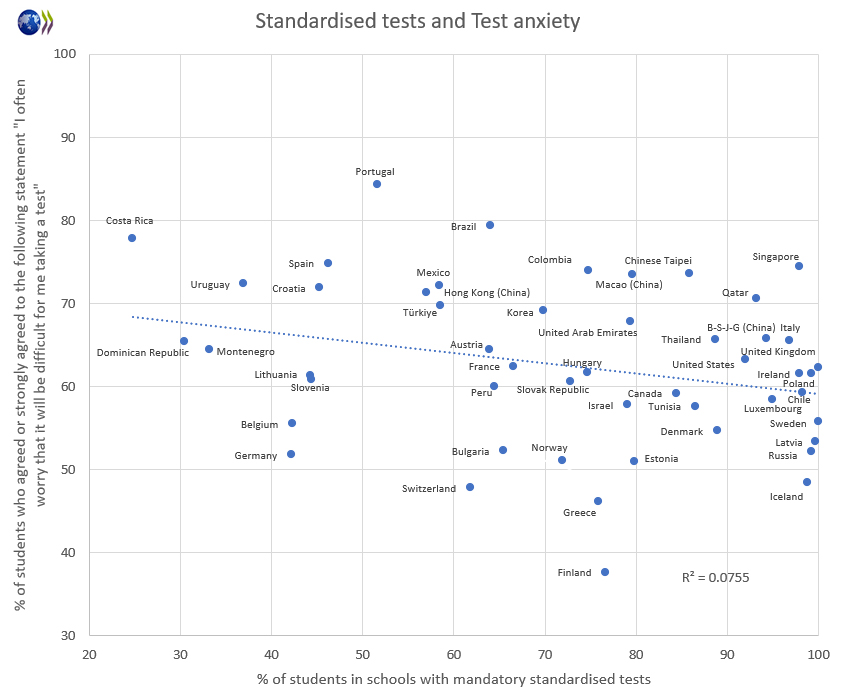By Andreas Schleicher
OECD Director of Education and Skills
At this year’s meeting of G20 Education Ministers in Pune, one of the questions that came up was the extent to which standardised testing would contribute to student anxiety.
Reducing the use of standardised tests carries obvious risks, as the existence of high-stakes exams in education has been clearly associated with stronger educational performance and, equally important, a more equitable distribution of educational outcomes. But is the price of greater student anxiety worth paying, in light of growing concerns among policy-makers and educators about the mental health and well-being of students, particularly in the context of recovery from the pandemic?
Interestingly, a look across countries does not show any relationship between the share of students in schools with mandatory standardised tests and the share of students who say they often worry that it will be difficult for them taking a test.
In Portugal, the global champion on test anxiety, little more than half of 15-year-olds are in schools with mandatory tests and just 8% of students are in schools that are required to test 3 times or more per year. In Sweden or the Chinese regions participating in PISA, half of the 15-year-olds get tested 3 times or more each year, but students report much lower test anxiety. Finland, where over three quarters of students are participating in mandatory tests, reports the lowest level of test anxiety among the PISA countries.
In short, fostering student well-being and reducing anxiety are very important policy objectives. But cross-country comparisons do not suggest that lowering standards or reducing tests will contribute to that objective.



